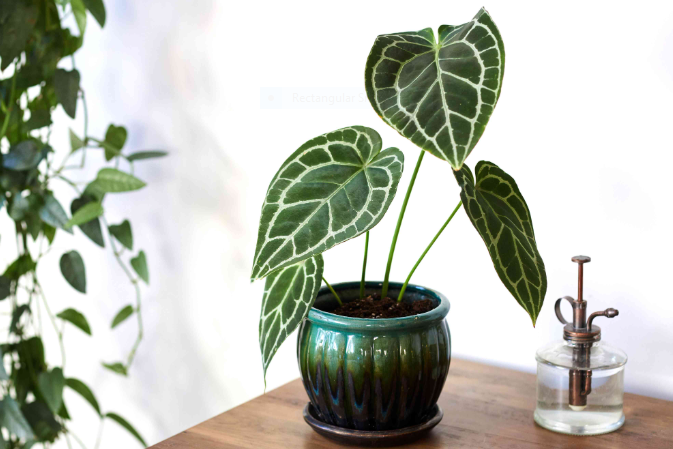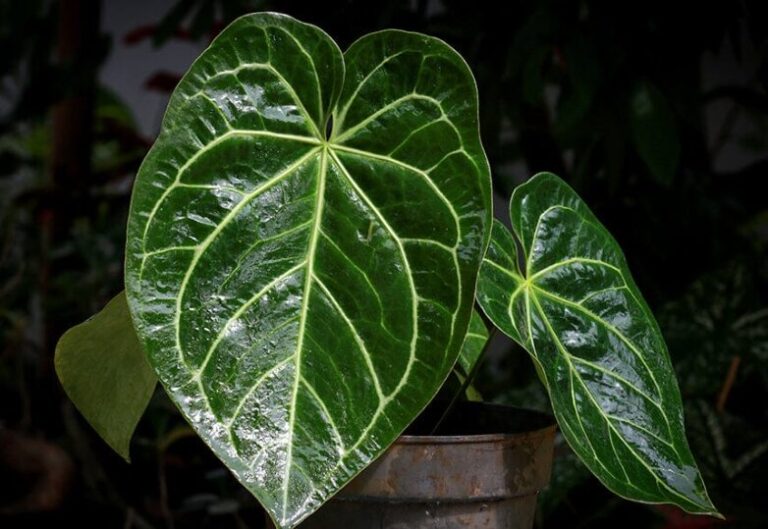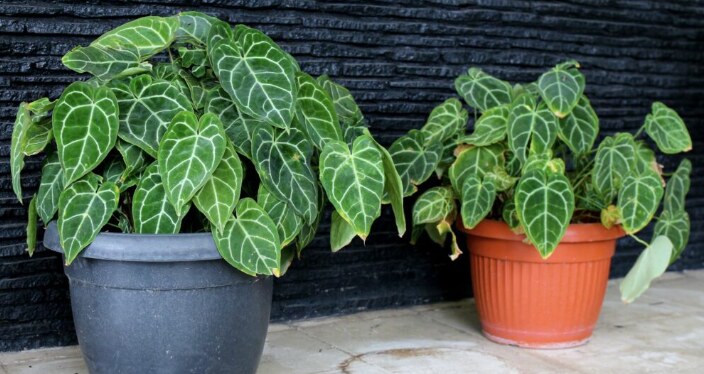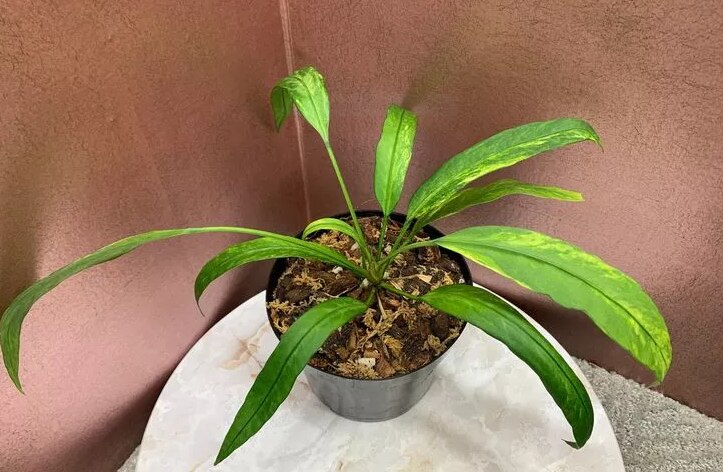Anthurium Villenaorum: Origin, Hybrids, Care, and Propagation
Anthurium villenaorum, also known as Villena Anthurium, Tail Flower, or Flamingo Flower, is a lovely species from the aroid family. With its large, thick, velvety, and deep green leaves adorned with white veins, it resembles Anthurium warocqueanum and Anthurium regale but with a more compact growth pattern.
Anthurium Villenaorum is recognized for its easy care. In this guide, we will briefly discuss Anthurium Villenaorum, its origin, appearance, different hybrids, care requirements, propagation methods, and common problems associated with this plant.
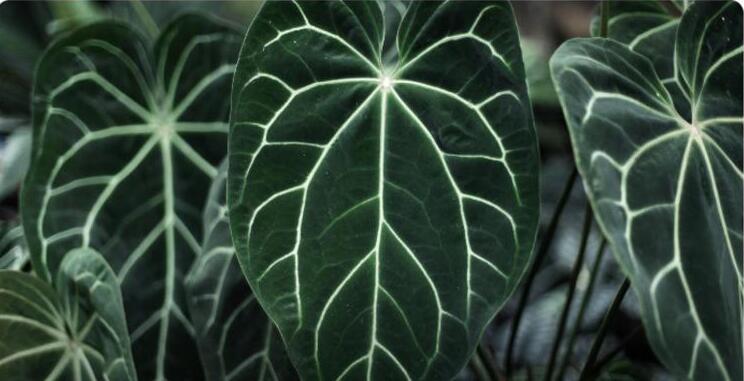
What is Anthurium Villenaorum? Origin and Appearance
Anthurium Villenaorum is the recent addition to the Araceae (Aroid) family that is admired for its thick velvety deep green leaves. The plant resembles to Anthurium Warocqueanum and Anthurium Regale but has more compact growth pattern. It is a large plant that can reach a height between 47-70 inches.
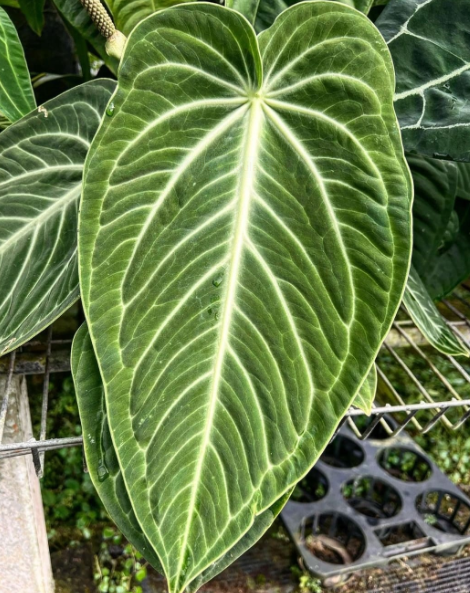
1. Origin:
Anthurium Villenaorum, aka Tail Flower or Flamingo Flower, originates from the lowlands of the San Martin Region of Peru.
2. Leaves:
Villena Anthurium produces:

3. Flowers:
Anthurium Villenaorum has:
4. Roots
This epiphyte species has aerial roots designed to cling to the bark and absorb nutrients and moisture.
Top Anthurium Villenaorum Hybrids
Plant growers and nursery owners like to cross Anthurium Villenaorum with other Anthuriums due to its compact growth habit. The cross produces beautiful hybrids that also become a great choice for Anthurium lovers for their indoor gardens.
Villena Anthurium has been successfully Cardiolonchium and Anthurium species to produce the beautiful hybrids. The following are some of the exciting crosses of Anthurium Villenaorum with other species:
How to Grow and Care for Your Anthurium Villenaorum? Care Tips (Light, Water, Soil, and Humidity Requirements)
Anthurium Villenaorum is an easy-to-care-for tropical plant. Follow the tips and requirements below to grow and care for your Tail Flower Anthurium:
1. Anthurium Villenaorum Lighting Needs
Anthurium Villenaorum requires bright but indirect light to thrive when grown indoors.
The pretty location for your anthurium villenaorum is partial shade, where it receives bright, indirect sunlight.
Place your plant where it will quickly receive 6-8 hours of indirect sunlight daily. If normal light is insufficient, you can also use artificial growth lights to promote plant growth.
Direct sunlight is harmful to the plants. It can burn their pretty leaves and damage their growth.
2. How Often Should You Water Your Anthurium Villenaorum?
Water your Anthurium Villenaorum plant once a week during its growing season or when the top few inches of the soil feel dry.
However, avoid watering it when it is new to your place from the nursery.
Watering mainly depends on the temperature and humidity range that your plant is facing.
Anthurium villenaorum shows some clear signs, indicating that your plant is thirsty or stressed. These signs include:
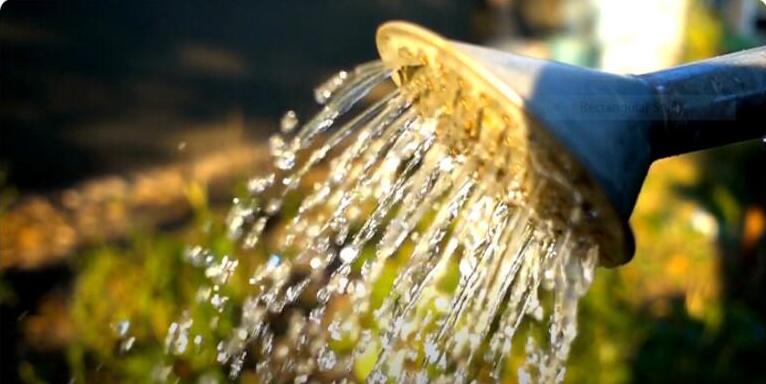
3. Anthurium Villenaorum Potting Soil Requirement
Anthurium villenaorum is too demanding or conscious when it comes to potting soil. This plant loves to grow in a well-drained potting mix. I prefer peat mix because it provides the nutrients for good plant growth.
The ideal potting mix contains an equal quantity of well-drained soil, perlite, and orchid bark. If the soil drains quickly, it becomes too good for air circulation for your plant.
The plant shows optimal growth results in USDA hardiness zones 10-11.
Do not use the soil of your garden or nurseries. Plants will suffocate in that soil medium and will face an oxygen deficiency.
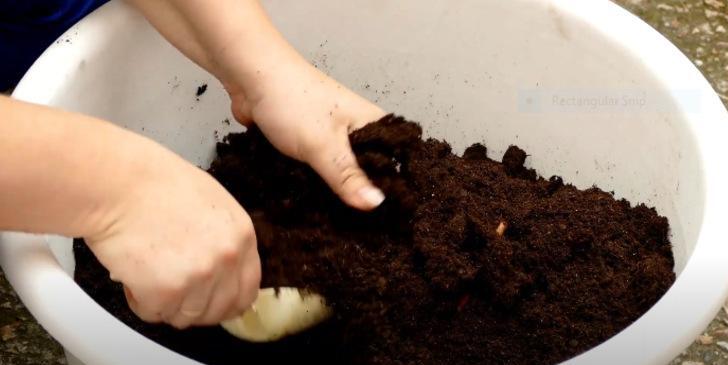
4. Villena Anthurium Humidity Requirements
Anthurium villenaorum thrives best in high humidity, between 70% and 90%. To grow your plant, you can use a humidifier or a water-filled pebble tray.
Many aroid enthusiasts prefer greenhouse cabinets or grow tents for maintaining humidity levels. If your plant grows in those places, ensure it is surrounded by good air circulation.
The bathroom or kitchen is the best place for this tropical plant. The humidity level is higher there than in other areas of the home.

5. How Much Temperature Does Your Anthurium villenaorum Need?
The Villena Anthurium loves to grow in warm temperatures like those of its natural habitat. The ideal range is 61 to 76 degrees Fahrenheit. Your plant requires more water in high temperatures.
To maintain an ideal temperature:
Keep this houseplant away from cold areas or places with temperatures less than 15 degrees Celsius.
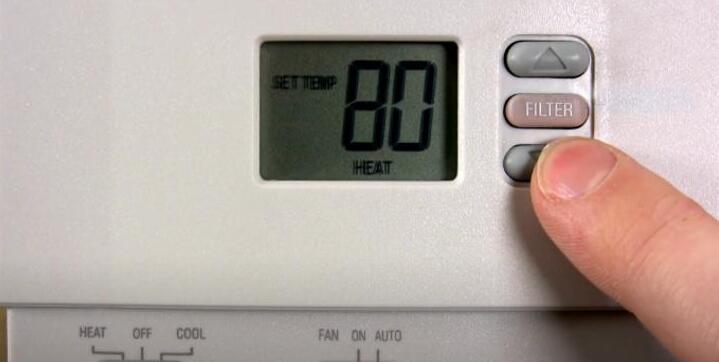
6. When to Fertilize Your Anthurium Villenaorum?
Give fertilizers to your Villena Anthurium at least once a month or every two to three months. Before blooming, give your tropical plant a porous, rich fertilizer, which helps to increase its flowering.
Avoid overfertilizing because it can damage or burn its leaves.

7. When to Repot Your Anthurium Villenaorum?
Repot your tropical beauty after every 2 to 3 years.
The plant shows specific signs that indicate that it needs repotting. These signs include:
Early spring is the best time for repotting. The new pot should be at least 2 inches bigger than the old pot.
Anthurium Villenaorum Pruning Requirements
Regular pruning is the best way to make your plant look eye-catching and pretty.
Always wear gloves and use clean, sharp scissors to protect your plant from damage or disease while pruning.
Refrain from doing heavy pruning of your anthurium villenaorum.
How to Propagate Your Anthurium Villenaorum? Step-By-Step Guide
Anthurium Villenaorum can be propagated through the following methods:
1. Water Propagation:
Try propagating your Anthurium in water. When grown in glass containers, they look like pretty décor pieces. Follow these steps for its propagation in water.
2. Soil Propagation
If you like conventional growing techniques, then try soil propagation. Follow these steps for the soil propagation method. These are:
3. Propagation Through Seeds
If you successfully pollinate your anthurium villenaorum, then the seed propagation method is for you. You can easily do this method by following these simple steps:
Common Problems of Anthurium Villenaorum and Troubleshooting Steps
Below are some common issues associated with Anthurium villenaorum and their possible solutions:
1. Root Rot
Root rot is the primary sign that your plant is experiencing water stress.
Water stress can occur from both over- and underwatering. Both can damage your plant’s long-term health.
Keep your plant soil dry for a short time.
In hot temperatures, when you water your plant once a week, it will face the problem of underwatering.
2. Bacterial Wilt
Chlorosis or yellowing leaves is the most common sign of bacterial wilt. A bacteria known as Ralstonia is the common cause of this disease in the humid environment. The dark green leaves start turning bronze or brown as the bacteria attack the vascular system of the plant. Your Villena Anthurium will start wilting if the infection spreads.
To prevent bacterial wilt:
3. Bacterial Blight
As the name suggests, bacterial blight is a bacterial disease that develops V-shaped watery lesions on the leaf margins of your Anthurium Villenaorum. It is caused by Xanthomonas bacteria that enter the leaves via the pores on the surface and infect the leaves. The bacteria can not spread within the plant, but also from one plant to another. Therefore, isolate the infected plant to avoid its further infestation.
Bacterial blight can cause your Anthurium plant to wilt and die as all the leaves turn brown.
To prevent this infection:
Pests
Anthurium villenaorum has thick leaves which are vulnerable to sucking pests like mealybugs, aphids, mites, and thrips instead of chewing pests.
These pests mainly feed on plant leaves by sucking their juice and slowly cause death.
Symptoms
Treatment
You can protect your plant with proper care and treatment.
Clean the leaves with these:
Regular monitoring is necessary to protect your plant from future infestations.
FAQS
Do the leaves of Anthurium Villenaorum stay green in all seasons?
Yes, leaves stay green in all seasons because anthurium villenaorum is an evergreen variety.
How can I prevent my Anthurium Villenaorum from leggy growth?
First, ensure your plant receives indirect and bright sunlight. Second, cut off leggy stems if you see them to maintain your plant.
Also Check What is Anthurium Crystallinum?
Conclusion
Anthurium Villenaorum, with its deep dark green leaves featuring velvety veins, is an adorable plant to grow indoors. Hailing from the lowlands of the San Martin Region of Peru, the plant grows well when you mimic its natural habitat.
It requires indirect bright light, high humidity, warm temperature, well-draining potting mix, and regular wartering with diluted fertilizers to thrive in your home garden. And if you plan to grow your collection, you can increase the number by propagating it through water, soil, and seeds.

About Author
Hi, I’m Emily Davis, a passionate tropical plant enthusiast dedicated to sharing knowledge and expertise with plant lovers. Through his blog, I will provide guides, tips, and tricks for caring for tropical houseplants species like Alocasia, Anthurium, Calathea, Philodendron, Begonia, and many more that will help readers bring a touch of paradise into their own homes. With a deep love for the vibrant colors and lush textures of tropical flora, I’m committed to inspiring others to cultivate their own tropical oasis.

